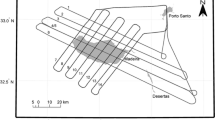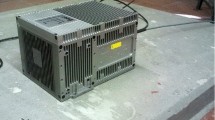Abstract.
In September 1996 the University of Calgary tested a combination of strapdown inertial navigation systems and differential global positioning system (DGPS) receivers for their suitability to determine gravity at aircraft flying altitudes. The purpose of this test was to investigate the long-term accuracy and repeatability of the system, as well as its potential for geoid and vertical gradient of gravity determination. The test took place during a 3-day period in the Canadian Rocky Mountains over a single 100 × 100 km area which was flown with 10-km line spacing. Two flights were done at 4350 m in E–W and N–S profile directions, respectively, and one at 7300 m with E–W profiles. Two strapdown inertial systems, the Honeywell LASEREF III and the Litton-101 Flagship, were flown side by side. Comparison of the system estimates with an upward-continued reference showed root-mean-square (RMS) agreement at the level of 3.5 mGal for 90- and 120-s filter lengths. The LASEREF III, however, performed significantly better than the Litton 101 for shorter filtering periods of 30 and 60 s. A comparison between the two systems results in an RMS agreement of 2.8 and 2.3 mGal for the 90- and 120-s filters. The better agreement between the two systems is mainly due to the fact that the upward-continued reference has not been filtered identically to the system gravity disturbance estimates. Additional low-frequency differences seem to point to an error in the upward-continued reference. Finally, an analysis of crossover points between flight days for the LASEREF III shows a standard deviation of 1.6 mGal, which is near the noise level of the INS and GPS data. Further improvements to the system are possible, and some ideas for future work are briefly presented.
Similar content being viewed by others
Author information
Authors and Affiliations
Additional information
Received: 17 March 1998 / Accepted: 1 February 1999
Rights and permissions
About this article
Cite this article
Glennie, C., Schwarz, K. A comparison and analysis of airborne gravimetry results from two strapdown inertial/DGPS systems. Journal of Geodesy 73, 311–321 (1999). https://doi.org/10.1007/s001900050248
Issue Date:
DOI: https://doi.org/10.1007/s001900050248




